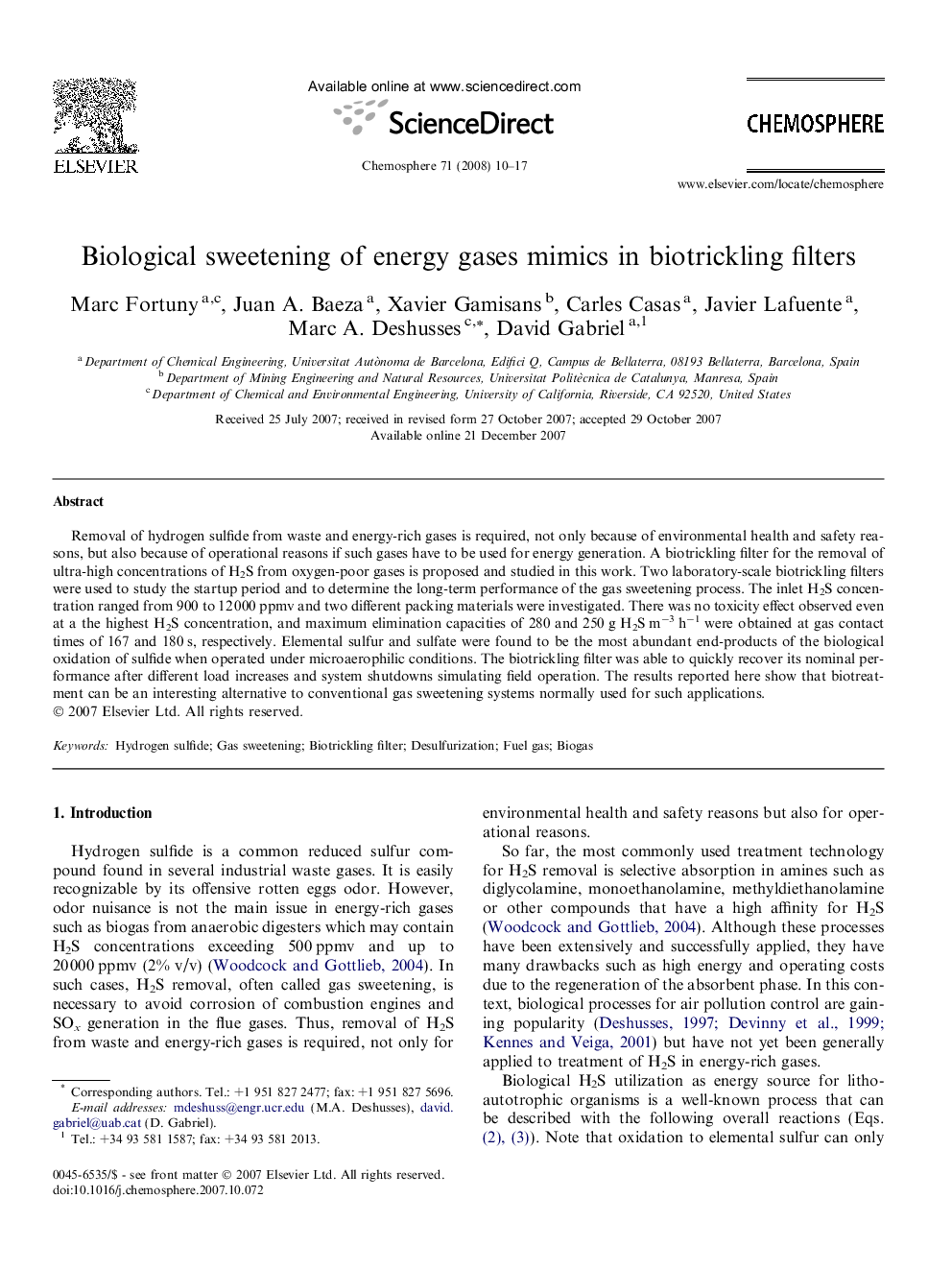| Article ID | Journal | Published Year | Pages | File Type |
|---|---|---|---|---|
| 4413991 | Chemosphere | 2008 | 8 Pages |
Removal of hydrogen sulfide from waste and energy-rich gases is required, not only because of environmental health and safety reasons, but also because of operational reasons if such gases have to be used for energy generation. A biotrickling filter for the removal of ultra-high concentrations of H2S from oxygen-poor gases is proposed and studied in this work. Two laboratory-scale biotrickling filters were used to study the startup period and to determine the long-term performance of the gas sweetening process. The inlet H2S concentration ranged from 900 to 12 000 ppmv and two different packing materials were investigated. There was no toxicity effect observed even at a the highest H2S concentration, and maximum elimination capacities of 280 and 250 g H2S m−3 h−1 were obtained at gas contact times of 167 and 180 s, respectively. Elemental sulfur and sulfate were found to be the most abundant end-products of the biological oxidation of sulfide when operated under microaerophilic conditions. The biotrickling filter was able to quickly recover its nominal performance after different load increases and system shutdowns simulating field operation. The results reported here show that biotreatment can be an interesting alternative to conventional gas sweetening systems normally used for such applications.
